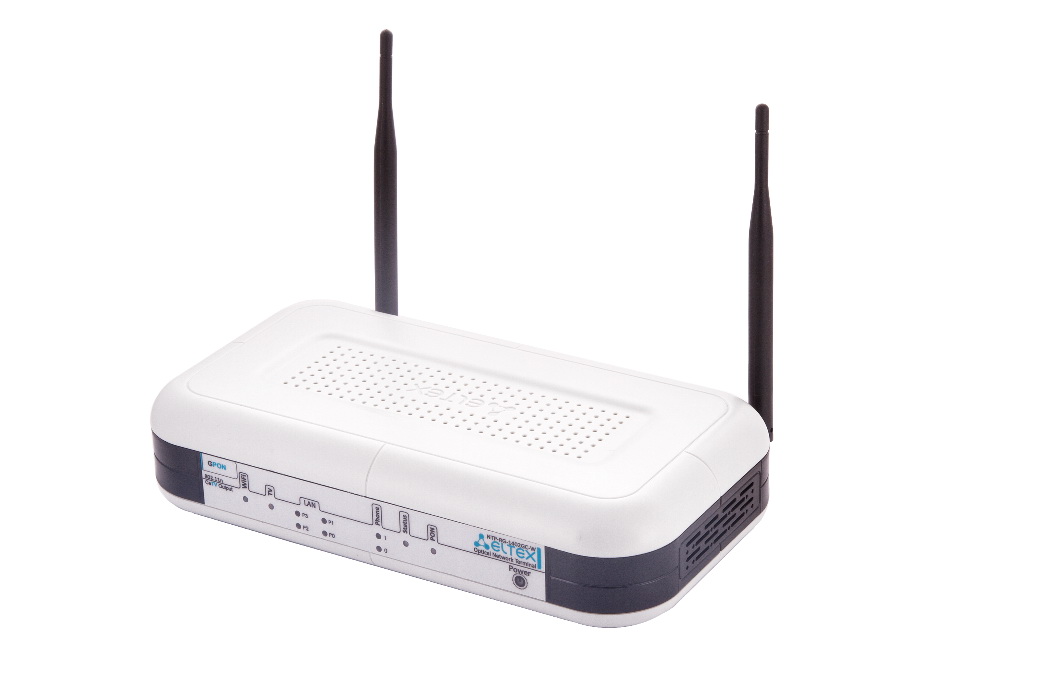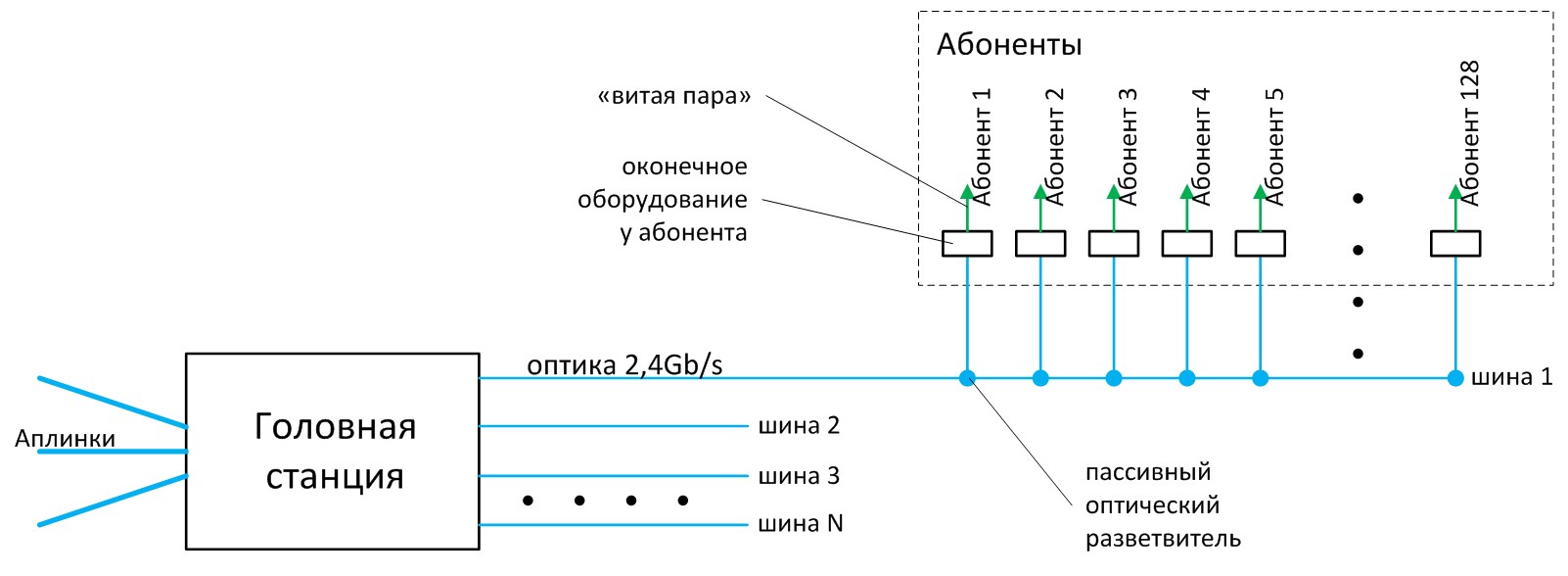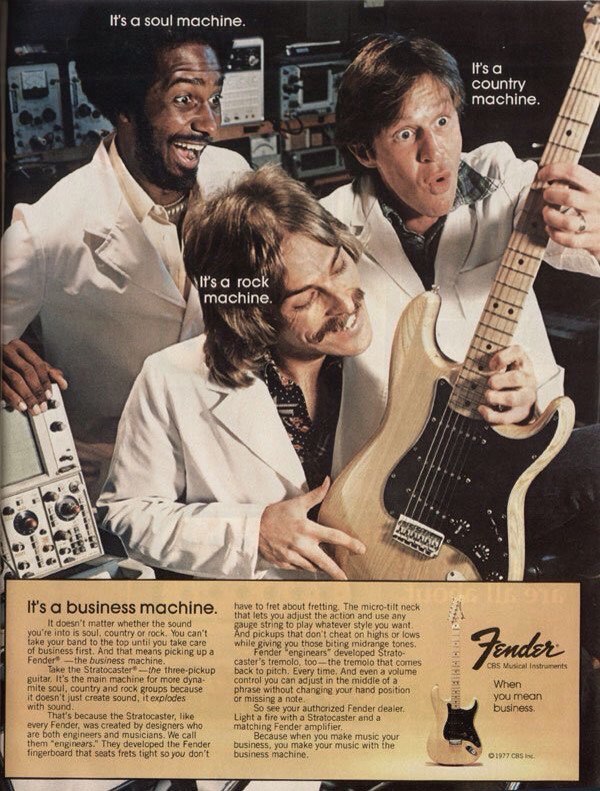GPON technology in apartment buildings - the future of the Internet provider or marketing bubble?

All welcome. This is a first-person text. Writes Dmitry Kozmenko.
First of all, I want to emphasize that we, the Sochi provider Business-Svyaz , have successfully used the technology of a passive optical network in the city of Sochi and adjacent villages for five years. At the moment, we have more than thirty GPON head stations, serving several thousand subscribers. We are familiar with the technology not by hearsay, participated in closed testing, debugging the firmware together with the developers of both the devices themselves and the chipsets. That is, we use GPON technology in our work. However, wherever possible, we are working with the classic “twisted pair” scheme. And for some reason, it never occurred to us to take a message about GPON in any kind of marketing attraction of subscribers or as some kind of our very special competitive advantage. Because, if you look carefully and in detail, the GPON technology went and went as far as subscribers. And the fact that many providers position using GPON as a strong product advantage for subscribers is strange. If you don’t say that it looks like a little fraud.
Today, the GPON product lines of the following manufacturers are widely represented on the Russian market: Huawei, Qtech, Bdcom, Eltex. The article is written taking into account the experience of working with these glands, both our own and colleagues.
And in order not to get up two times, I want to warn readers against buying GPON terminals cheaper on Aliexpress, etc. Although the technology has a common name, but in most cases the protocols inside it are proprietary, that is, the subscriber terminal of one manufacturer will not work with head station of another manufacturer. In technical support, subscribers sometimes bring some game purchased on the Internet and ask to set it up. Alas, this is just discarded money. Vendors defend their positions in the market and still get the main profit at subscriber terminals sold in large quantities, and not at the “head”, which they are ready to give in to operators with a big discount. None of them will want cheap subscriber numbers to be compatible with his station.But we digress, back to the topic. What are the benefits of GPON technology, why are operators implementing it massively, and marketers praising it? And they praise something like this:
')

Modern GPON connectivity technology provides stability and the highest quality connectivity, regardless of the overall network load and external factors. GPON is a modern speed standard adopted in Europe and the world.OK.
A provider (such and such) will connect for you unlimited broadband access using super-fast GPON technology. We offer a wide range of speeds, ranging from 20 and ending with unrealistically fast 500 Mbit / s!
Each subscriber ... receives a dedicated fiber optic channel. Its high bandwidth is the key to stable speed throughout the day, and the quality of communication remains high due to advanced technologies.
GPON-Internet from the provider (such and such) is the maximum comfort for each user!
Connect the selected tariff for FREE and rest assured that home Internet speeds will remain stable day and night.
GPON (Gigabit Active Passive Network) is a rapidly developing technology that provides multiservice access services with guaranteed high quality over a single fiber-optic cable. It involves the laying of modern cable from the PBX to the apartment the subscriber, excluding on the way any active equipment. Splitters (optical splitters) that do not require maintenance and power are placed in intermediate nodes. This makes it possible to achieve a high bandwidth for the channel and, accordingly, to connect several services on one line.
Marketers have spoken. Let's now look at the facts. GPON technology was standardized by ITU-T in 2008. But a breakthrough did not happen then for a number of reasons (the bumpiness and high cost of equipment). The rebirth of this technology accounted for 2013-2014.
I suggest, based on the existing practical experience, to briefly go over the advantages that GPON really gives.

Saving. Today, a meter of high-quality copper UTP-5e costs 15-17 rubles, a meter of high-quality distribution optics - 4 rubles.
Communal apartment The operator is not required to rent space for communication centers and to compensate for electricity costs in each apartment building (hereafter MCD). And the installer when connecting a new subscriber does not need to make gestures on the site, look for keys to the attic, etc., etc.
Maximum distance of subscriber line. For "twisted pair" the maximum length of a gigabit connection, in our experience, is 100 meters. For optical connection by GPON - 20-40 km. That is, it is possible to serve several MCDs with one head station, a whole block.
Non-volatility. Since the entire route from the head station to the subscriber is passive, the presence of power is required only at the operator's site and at the subscriber. At the same time, the whole territory between them can be de-energized by local power grids, or housing offices, or by insane electricians, and generally be in the darkness of the night.
Small size. An internal cable with a diameter of 3 mm is much easier to push in the clogged interfloor mines of old MCDs than a bundle of "vituhi"; After all, in the classical scheme, each subscriber needs a separate “vituha”, while the GPON has one fiber per “bus” and splitters on the floors.

As an operator, we deploy GPON when we go to the suburbs: cottage villages, the private sector, country cooperatives, etc. In general, where the network is built on supports (the word “poles” are terribly disliked by the power industry), squares, and splitters fit comfortably into cable boxes. Here all the advantages of this solution are manifested in full growth: the length of the route, and non-volatility, and savings. In fact, in such territories, the GPON solution has no real alternative.
A GPON network consists of a head station with 4, 8 or more segments, or rays; Next comes the optical distribution network, built according to the classical tree diagram, where the branches are optical fibers, and the branches are passive optical power dividers (splitters). At the ends of these “branches”, like apples, are subscribers who have terminal optical terminals (ONU or similar) installed. One segment, according to manufacturers' specifications, has up to 128 subscribers; that is, one head station on 8 segments is capable of serving 1024 subscribers simultaneously. Head station on the example of ELTEX LTP8x:

There is such a concentration of subscribers in a single fiber due to the simultaneous application of the principles of frequency and time multiplexing (FDM + TDM) - just like in cellular networks. Frequency: reception and transmission to all subscribers go in one fiber, but at different wavelengths. Time: thanks to LTE multiplexing protocols, the head station and subscriber terminals operate as a single system, parsing IP packets from a common bus, broadcasting the necessary ones through themselves, and discarding packets destined for other recipients. In fact, the GPON segment is a shared data bus, where everyone sees everyone, and from which subscriber devices “pull out” the packets intended for them. All this construction works at speeds of 2.4 gigabits per second upstream / downstream. On the side of the head station, the optical “tree” is inserted into the special SFP PON module by the barrel. On the subscriber side, the terminals have an onboard optical connector directly.

Schematically, the GPON network can be represented as:

But if GPON has so many advantages, and if it is such a progressive and wonderful technology, why don't all operators politely switch to it, at least when building new networks in the MFN?
And here I will tell you about the pitfalls.
First, let's turn to the tablets. Here is how GPON bandwidth characteristics are described, as recommended by RFC-G.984.1:
7 Bit rateAnd now let's repeat what advantages GPON gives:
Basically, GPON aims at transmission speeds greater than or equal to 1.2 Gbit / s. To,
GPON identifies two transmission speed combinations as follows:
• 1.2 Gbit / s up, 2.4 Gbit / s down;
• 2.4 Gbit / s up, 2.4 Gbit / s down.
• Non-volatility on the way from the communication center to the client;
• Long distance;
• It is easier to pass interfloor cable channels;
• Cheap materials.
But wait a second, these are all advantages for the telecom operator, but where are the benefits for the client? Hmm, hmm ... and they are not.

That is, how not? Yes, that's it. The GPON technology does not give any real technological advantage in comparison with the traditional “twisted pair” to a subscriber in an apartment building.
Moreover, with the growth of the subscriber base in one segment from a pair of three to 100+ subscribers, the degradation of the quality indicators of the access level network based on GPON technology is guaranteed. That is, a situation is possible when such an “innovative” operator bursts into the MKD quarter, moves other operators there, rubs trusting people about the fact that “the optics are better in every apartment than the outdated copper wires”, but in fact transfers them from the actually allocated channels in multiplexed, compacted environment, which is limited to a ceiling of 2.4 gigabits per second, minus IPTV for all who are currently sitting there and swinging. By the way, IPTV on 150-200 TV channels is about 600-700 mb / s, which is “otzhirayutsya” from the total to the segment of 2.4 gb / s.

Now let's take a closer look at the wording "optics in the apartment."
Firstly, the classic operators IP-traffic is also not in the buckets drag. It is transmitted by exactly the same optics, only converted into an electrical signal by a switch in a house or a staircase, from where a twisted pair comes to the apartment. Usually the distance of such a “twisted pair” is 30-50 meters, but it can reach up to 100 meters. This does not affect the quality, the subscriber receives his honest gigabit at the access level. At the same time, the subscriber retains the ability to enable such a “vituha” both directly to the computer and use a router, without having to be bound to the manufacturer. And the problem with power supply is solved by using switches with an integrated battery. Izi, reel current.
Secondly, optics itself is not an easy thing and requires qualification. It is not so easy to increase, move to another room. The subscriber himself cannot do this, well, with rare exceptions. And in case of excessive bending - for example, inside the baseboard or around the ceiling beam - both attenuation and reflection can begin. If you are completely “lucky” - such reflection can lead to degradation of the level of service in the whole segment where this subscriber is included.
Thirdly, optics cannot be directly included in any subscriber device: computer, laptop, tablet, TV set, set-top box - they all receive either an electrical signal in the form of Ethernet, or Wi-Fi. In any case, a certain converter from optics to electricity is required, which, in the case of GPON, is located at the subscriber. At the output from the GPON terminal in the direction of the subscriber equipment (surprise!) - all the same gigabit Ethernet port.

Yes, you can talk for a long time about the traffic profiles of residential subscribers, that they never dispose of their channels at 100%, etc., etc. But in any case, the conclusion is the same: nothing from the advertised "stability and highest quality connections that does not depend on the overall network load and external factors. ”GPON cannot guarantee such subscribers, and it does not give any advantages over a normally constructed“ twisted pair ”. And if the use of GPON in the “old stock” with the mines and the memorial attendants “We don’t need your internet!” Can still be understood somehow, then the “innovators” offering IT in new buildings, where even at the design stage everything can be done competently and beautifully, where, according to modern technical regulations, cable shafts are convenient for work - I refuse to understand these guys decisively.
And with all this in mind, rub in trustful subscribers about “guaranteed 500 Mb / s day and night”, “dedicated fiber optic channel”, “advanced technology”, and at the same time connect these subscribers to a common bus with dozens of other subscribers, where everything is only 2400 mb / s is how to sell mashed potatoes in the factory canteen of a common huge aluminum pan under the guise of a biological carbohydrate-starch mass, which is designed to fill cells with fast and cheap energy.

Or how to offer to change a good, roomy Kruzak for a hand-made racing car: fast, prestigious, super modern. On the one hand, it sounds cool, but only then it turns out that Vasya, Masha and Vitalik from the next porch strive to get four of you into a single supercar. And then Maria Ivanovna, a neighbor from above, decides to repaint him, because she also has the right to him. Well, and apparently intended that users should respond to GPON like this:

But I argue that GPON in MCD is a profitable for the operator, but unfavorable for the client, a solution that has only one advantage — pure, unclouded marketing. That is, when there are no other advantages for the subscriber (price / quality) - the argument goes into battle: “but then we’ll get you the optics straight to the apartment”. I will say more - I even understand why this is happening: after all, the set of advantages for telecom operators and for customers and to each other is completely limited. What could be here? Speed, stability of work, adequacy of technical support, prices ... well maybe maybe 2-3 minor things will come up. At the same time, in order to stay afloat and attract attention in a very competitive and long-divided market, in order to enter new buildings and corporate customers, you need to constantly invent some additional triggers, to the extent that getting something “from the kitchen” ”, Which everyone uses for a long time, and position it as something fantastic - well, in general, as with GPON. But I also understand very well that in the long run and at long distances, it’s not these marketing tricks that will play the decisive role, but how you work: honestly or not, expensive or cheap, are you stable at work or your system constantly fails, flexible or not and so on. Here I personally rely on it, but nevertheless I watch with great interest the rush around GPON and guess what new marketing message will replace this ☺ Maybe we will live to the point that we will begin to boast with higher-quality zero and one in binary code? ☺
What do you think about GPON and its real benefits for operators and subscribers? Do you agree or disagree with my theses? Why yes why not?
Source: https://habr.com/ru/post/371533/
All Articles